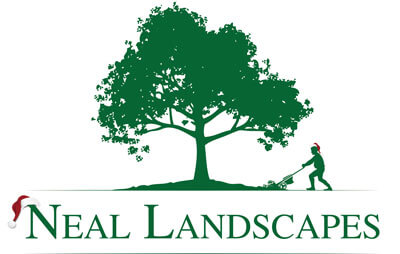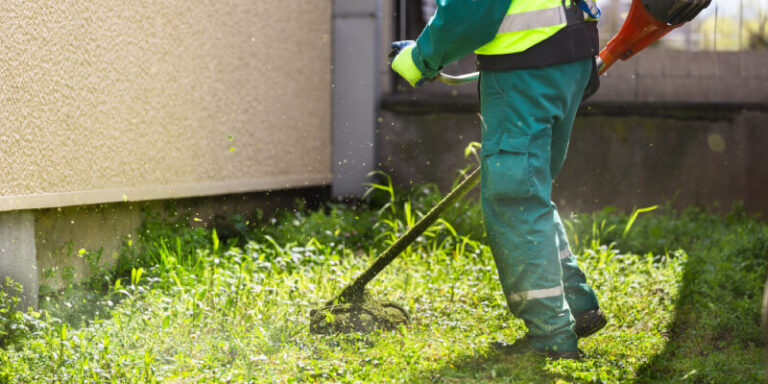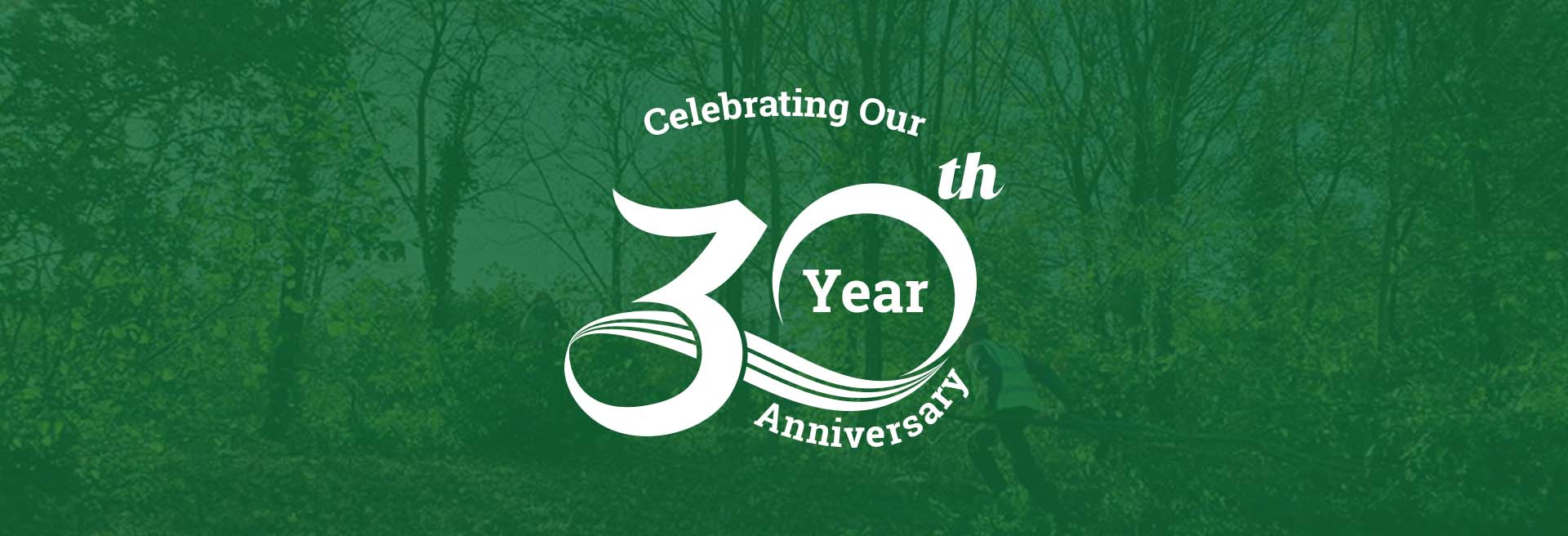Picture this: you’ve put loads of work into getting your property’s exterior looking its absolute best, only to find your plants slowly dying and your biodiversity plummeting. If that sounds painfully familiar, there’s a good chance your property might be home to some unwelcome invasive plants!
This is a seriously common issue across the UK. According to the Joint Nature Conservation Committee, invasive species pose one of the biggest threats to native biodiversity in our country. But don’t panic – in this article, the Neal Landscapes team will be using their expertise to explain how you can identify these troublesome plants and, more importantly, how to control them effectively.
Identifying & Dealing With Invasive Plants On Your Property
The scale of this problem might surprise you! In the UK alone, there are over 2,000 non-native plant species, and around 10-15 percent of them become invasive. That’s quite a few potential troublemakers lurking in our gardens!
This article will walk you through everything you need to know about identifying and managing invasive plants on your commercial property. We’ll cover the key species to watch out for, explain why they’re such a problem, and give you practical advice on dealing with them safely and effectively. Here’s what we’ll be covering:
- What Does It Mean If A Plant Is Invasive?
- Invasive Plant Species
- Do Invasive Plants Affect Biodiversity?
- How To Control Invasive Plant Species
- How To Dispose Of Invasive Plant Species
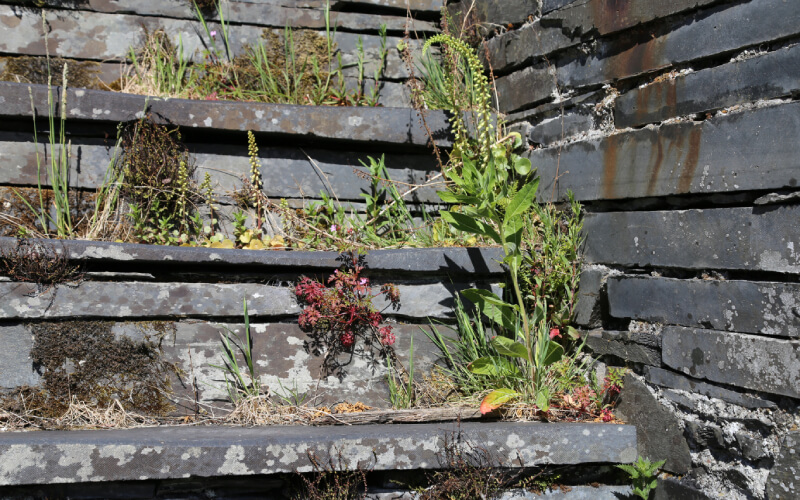
What Does It Mean If A Plant Is Invasive?
Let’s start with the basics! There’s actually an important difference between a plant being “non-native” and being “invasive” – and understanding this difference is crucial for property managers.
A non-native plant is simply one that doesn’t naturally occur in the UK. Many of our favourite garden plants, like roses and tulips, are actually non-native! Most non-native plants live quite happily alongside our native species without causing any bother.
Invasive plants, however, are a problem. These are non-native species that move aggressively into new habitats and grab a huge share of resources like light, nutrients, water, and space. They’re basically the bullies of the plant world, pushing out everything else and taking over!
Most invasive plants made their way to the UK through human activity – whether that’s through international trade, people bringing them back from holidays, or personal horticulture. Many Victorian gardeners, for example, brought back exotic plants that seemed beautiful and harmless at the time, not realising they’d become major problems decades later.
The key thing that makes a plant invasive is its ability to spread rapidly and outcompete native species. Without their natural predators and diseases to keep them in check, these plants can absolutely take over landscapes in just a few growing seasons.
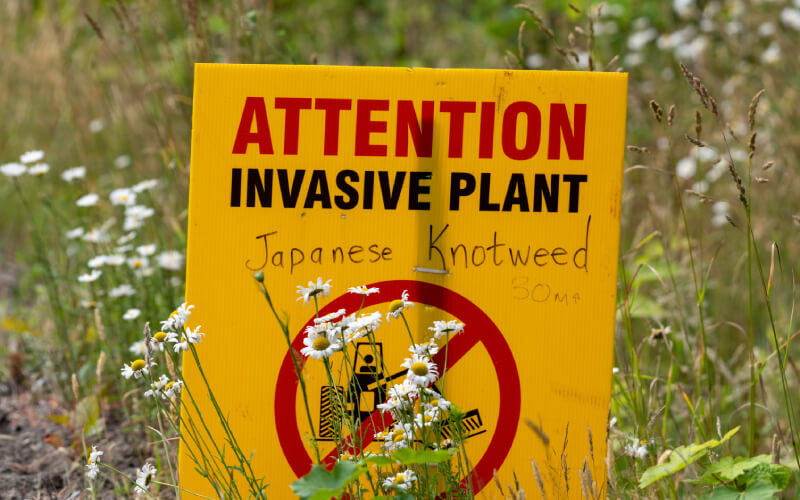
Invasive Plant Species
The good news is that the RHS provides a list of all invasive plant species present in the UK, so you can check exactly what you’re dealing with. However, these are some of the most common ones to look out for on commercial properties:
Japanese Knotweed
Perhaps the most infamous invasive plant in the UK! This beast can grow up to 10cm per day during its peak growing season and can cause serious structural damage to buildings, paths, and drainage systems. The roots spread incredibly far underground – sometimes up to 7 metres from the visible plant– making it extremely difficult to remove completely. Professional treatment often involves applying Glyphosate-based herbicides to the leaves, but this requires specialist knowledge and licensing.
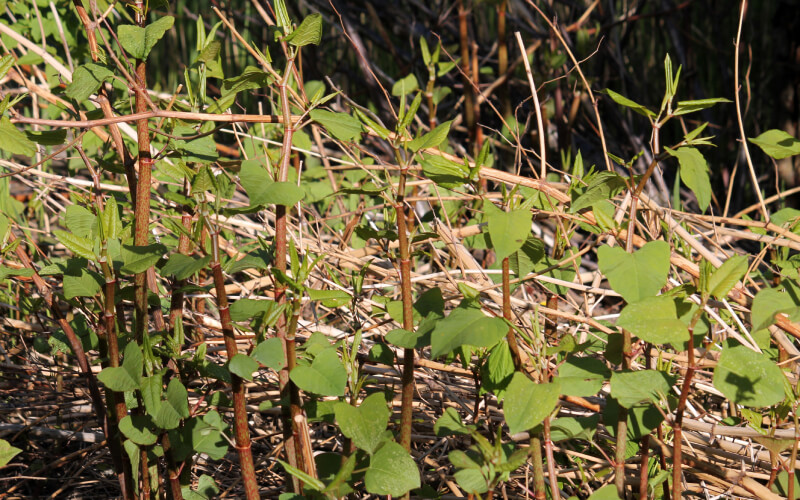
Giant Hogweed
Despite looking quite attractive with its massive umbrella-like flower heads, this plant is genuinely dangerous. The clear, watery sap is phototoxic and can cause severe burns or blisters when it comes into contact with skin and is then exposed to sunlight. Each flower can produce over 50,000 seeds, which explains why it spreads so rapidly across landscapes.
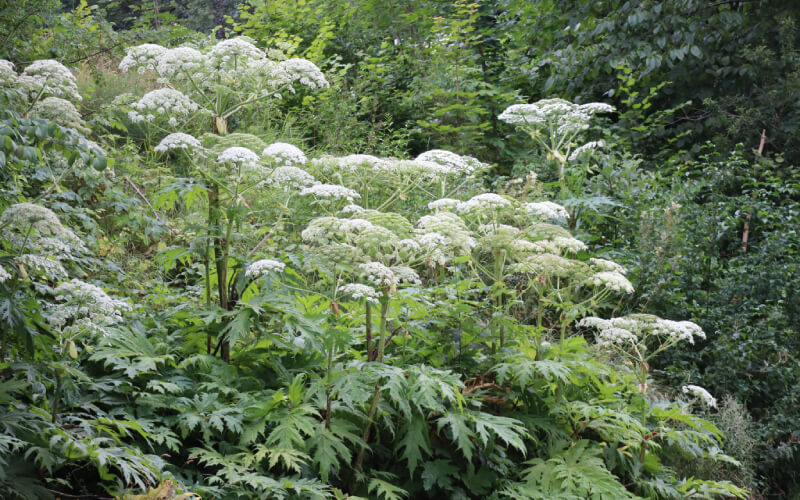
Himalayan Balsam
Again, this plant looks rather pretty with its bright pink flowers, but don’t let that fool you! It can launch seeds over 7 metres away, making its spread extremely difficult to control. These plants grow up to 3 metres high and create dense stands that block sunlight for other plants underneath. Councils across the UK are actively encouraging people to remove it if they see it, as it’s considered such a significant threat to native ecosystems.
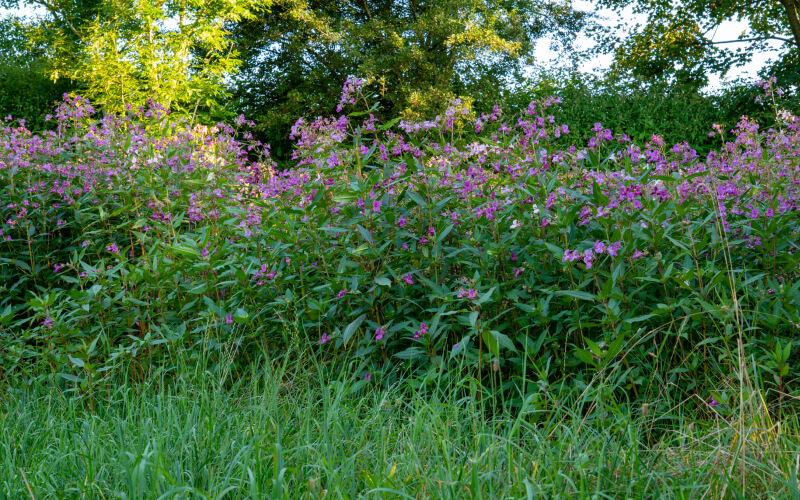
New Zealand Pigmyweed
This is a water-based plant that forms a dense mat on the surface of still or slow-moving water. It doesn’t just harm plant life – it can starve animals like fish and frogs of oxygen by creating an impermeable layer on the water’s surface. Even small fragments can establish new colonies, making it particularly tricky to eliminate.
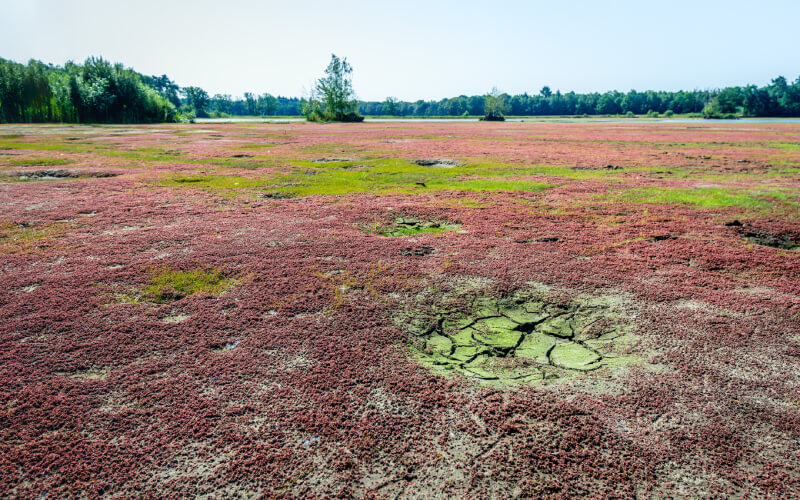
Three-Cornered Garlic
The white flowers on this plant are particularly attractive to ants, and as the ants disperse, they spread its seeds far and wide. It forms dense, far-reaching colonies that outcompete other plants for resources and can quickly dominate an area if left unchecked.
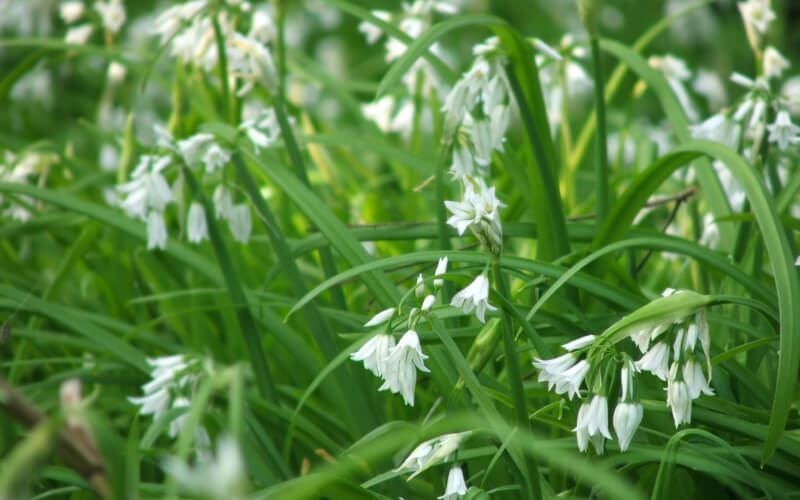
Do Invasive Plants Affect Biodiversity?
Absolutely, and it’s a massive problem! Invasive plants have a devastating effect on biodiversity, and this is particularly concerning because the UK already has among the lowest biodiversity in the world. A lot of effort is being made by conservationists, government bodies, and businesses like us, to protect what we’ve got left.
Biodiversity isn’t just important for the sake of having pretty flowers and interesting wildlife – it’s crucial for healthy ecosystems that provide clean air, clean water, pollination of crops, and climate regulation. When invasive plants take over, they disrupt these natural systems and can cause problems that affect us all.
The good news is that removing invasive species and replacing them with native alternatives can actually improve your property’s ecological value while often reducing maintenance costs too. Our routine grounds maintenance in Milton Keynes and the surrounding areas is one of the most effective ways to preserve the biodiversity of your property.
Here’s the great Sir David Attenborough to explain why protecting biodiversity is so important:
How To Control Invasive Plant Species
There are different regulations in place to protect the UK from invasive non-native plants, and understanding these can help you stay on the right side of the law while protecting your property.
Under the Wildlife And Countryside Act 1981, it’s actually illegal to plant or cause to grow any of the plants listed in Schedule 9. This means that if you knowingly allow these plants to spread from your property onto neighbouring land, you could face legal action.
In April 2014, there was also a ban on the sale of the seven worst invasive water plants, including New Zealand Pigmyweed. This shows just how seriously the government takes the threat posed by invasive species.
Working with specialists who understand these regulations, like our team at Neal Landscapes, is crucial. Not only do you need to remove invasive plants effectively, but you also need to ensure you’re doing it legally and safely. The key principles of controlling invasive species include early detection, rapid response, and ongoing monitoring. The longer you leave an infestation, the harder and more expensive it becomes to deal with.
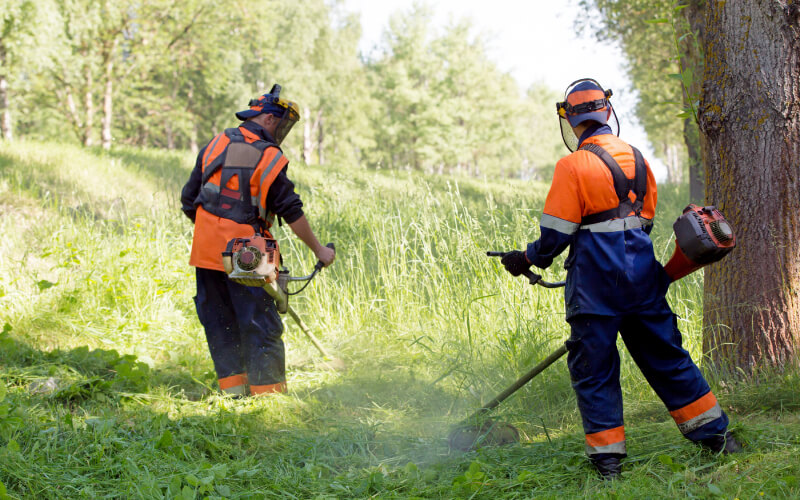
How To Dispose Of Invasive Plant Species
Here’s where things get really important – and where many property owners make costly mistakes! You absolutely should contact professionals like our team at Neal Landscapes to correctly dispose of invasive plant species. This isn’t just a recommendation; it’s essential because incorrect disposal is a highly technical procedure that can actually make the problem worse by accidentally spreading these plants during removal.
Here are some crucial things you’ll need to ensure for the proper removal of invasive plant species:
- Gather all of the roots: Many invasive plants can regrow from tiny root fragments, so complete removal is essential. Missing even small pieces can mean the problem returns within months.
- Handle extremely carefully: Some invasive plants require protective equipment during removal. Giant Hogweed, for example, can cause serious burns, while others may have sharp thorns or irritating sap.
- Use sealed bags for transport: All plant material must be contained to prevent accidental spreading during removal and transport. This includes cleaning tools and vehicles afterwards.
- Don’t put them in green bins: Your council’s green waste collection won’t accept invasive plant material, and putting it in there could actually help spread the problem to other locations.
- Dispose via designated landfill, incineration, or deep burial: Invasive plant material is classified as ‘controlled waste’ and must be disposed of at licensed facilities. Only certain disposal methods are legally acceptable.
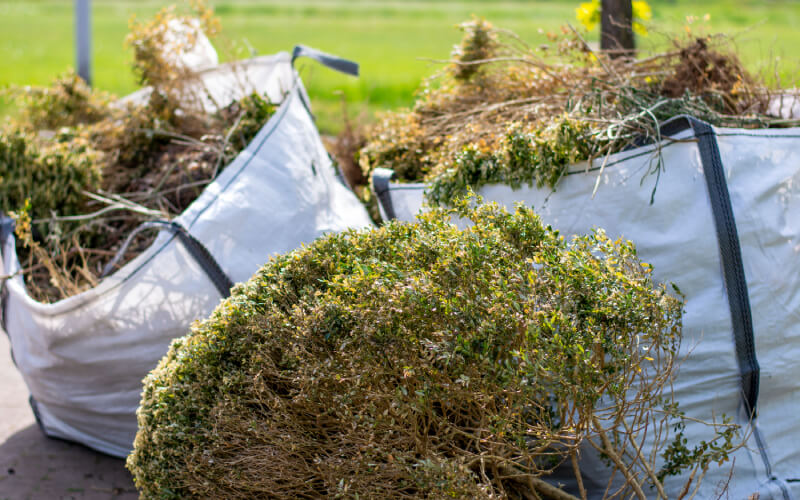
Protect Your Property With Neal Landscapes
There you have it – your complete guide to identifying and dealing with invasive plants on commercial land! As you can see, this is a complex issue that requires specialist knowledge, proper equipment, and careful handling to avoid making the problem worse.
At Neal Landscapes, we’ve been providing first-class landscape maintenance in Milton Keynes and the surrounding areas for over 30 years. Our experienced team understands the legal requirements, safety procedures, and most effective treatment methods for each type of invasive species.
From initial identification and assessment through to complete removal and ongoing monitoring, we provide comprehensive invasive species management services that protect your property, your budget, and the environment. Don’t let invasive plants take over your commercial landscape – get in touch with us today to discuss how we can help restore your outdoor spaces to their full potential!
